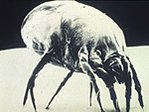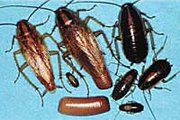Indoor environmental asthma triggers
Contents
Indoor Environmental Asthma Triggers
En Español[1]
Americans spend up to 90% of their time indoors. Therefore, indoor allergens and irritants can play a significant role in triggering asthma attacks. It is important to recognize potential asthma triggers in the indoor environment and reduce your exposure to those triggers. You may not be affected by all of the triggers listed here. Your doctor can help you to determine which triggers affect your asthma and develop a customized asthma management plan. You can download an Asthma Action Card (PDF, 2 pp, 163KB About PDF) to help you work with your doctor to customize an asthma action plan for your individual circumstances.
When you and your doctor make the plan, be sure to include:
- Your child’s asthma triggers.
- Instructions for asthma medicines.
- What to do if your child has an asthma attack.
- When to call your doctor.
- Emergency telephone numbers.
Some of the most common indoor asthma triggers include secondhand smoke, dust mites, mold, cockroaches and other pests, household pets, and combustion byproducts. Click on the links below to learn more about these triggers and how to reduce your exposure to them.
Secondhand Smoke
 Second Hand Smoke. (Source: NIH)
Second Hand Smoke. (Source: NIH) Secondhand smoke is a mixture of smoke from the burning end of a cigarette, pipe or cigar and the smoke exhaled by the smoker that is often found in homes and cars where smoking is allowed.
Dust Mites
 Dust Mite. (Source: NIH)
Dust Mite. (Source: NIH) Dust mites are too small to be seen, but can be found in almost every home in mattresses and bedding materials, carpets, upholstered furniture, stuffed toys and curtains.
Mold
 Mold in Damp Situations. (Source: NIEHS)
Mold in Damp Situations. (Source: NIEHS) Mold can grow indoors when mold spores land on wet or damp surfaces. In the home, mold is most commonly found in the bathroom, kitchen and basement.
Cockroaches and other Pests
 Cockroaches. (Source: NIEHS)
Cockroaches. (Source: NIEHS) Cockroach body parts, secretions and droppings, and the urine, droppings and saliva of pests, such as rodents, are often found in areas where food and water are present.
Warm-Blooded Pets (such as cats and dogs)
Pets skin flakes, urine and saliva can be found in homes where pets are allowed inside.
Nitrogen Dioxide
Nitrogen Dioxide is an odorless gas that can be a byproduct of indoor fuel-burning appliances, such as gas stoves, gas or oil furnaces, fireplaces, wood stoves and unvented kerosene or gas space heaters.
^English
Factores ambientales causantes de asma
Los estadounidenses pasan hasta un 90 por ciento de su tiempo bajo techo en un espacio cerrado. Es por lo tanto que los alérgenos y los irritantes que se encuentran en el medio ambiente interior pueden jugar un papel significativo como causantes de los ataques de asma. Es importante reconocer los factores que provocan el asma en un espacio cerrado y reducir la exposición a ellos. Usted no necesariamente se vera afectado por todos los factores aquí mencionados. Su médico le ayudará a determinar cuál de ellos provoca su asma y también a desarrollar un plan de acción para controlar la misma. Usted puede obtener una tarjeta de acción de asma “Asthma Action Card” (, 2 pp, 200KB) que lo ayudará a personalizar el plan de acción de acuerdo a sus necesidades o circunstancias.
Cuando usted o su médico hagan el plan deberán considerar lo siguiente:
- Qué es lo que le provoca asma a su niño
- Cuáles son las instrucciones para los medicamentos
- Qué hacer si su niño sufre un ataque de asma
- Cuándo llamar al médico
- Cuáles son los números para emergencias médicas
Algunos de los factores causantes de asma más comunes son:
- humo de tabaco en el medio ambiente
- ácaros de polvo
- moho
- cucarachas y otras plagas
- mascotas
- combustión producida por productos.
Haga clic en los enlaces que aparecen a continuación para aprender más sobre los factores causantes del asma y cómo reducir su exposición a ellos.
Humo de tabaco en el medio ambiente
 Second Hand Smoke. (Source: NIH)
Second Hand Smoke. (Source: NIH) El humo de tabaco en el medio ambiente es una mezcla del humo emanado por el cigarrillo, la pipa o el cigarro al quemarse con el humo que exhalan los fumadores.
Ácaros de polvo
 Dust Mite. (Source: NIH)
Dust Mite. (Source: NIH) Los ácaros de polvo son muy pequeños para verse a simple vista. Se pueden encontrar en los colchones, la ropa de cama, en la tapicería de los muebles, en peluches, en cortinas, y en casi todos los hogares.
Moho
 Mold in Damp Situations. (Source: NIEHS)
Mold in Damp Situations. (Source: NIEHS) El moho puede crecer en el interior de su hogar cuando las esporas de moho se depositan en superficies mojadas o húmedas. El moho se encuentra con más frecuencia en el baño, en la cocina o en el sótano.
Cucarachas y otras plagas
 Cockroaches. (Source: NIEHS)
Cockroaches. (Source: NIEHS) Las partes del cuerpo de las cucarachas, las secreciones y excrementos de las mismas, la orina, los excrementos y saliva de los animales tales como los de los ratones generalmente se encuentran en sitios donde se guardan los alimentos y el agua.
Animales domésticos (tales como gatos y perros)
La escama de la piel de estos animales, la orina y la saliva se puede encontrar en hogares donde estos animales se les permiten estar dentro del hogar. En los hogares donde a estos animales se les permite estar adentro se puede encontrar escamas de la piel, orina y saliva de los mismos.
Dióxido de nitrógeno (NO2)
El dióxido de nitrógeno es un gas que no tiene olor el cual puede haber sido producido por el combustible de los electrodomésticos, tales como las estufas de gas, hornos de gas o de aceite, chimeneas, estufas o calefacción que queman madera y calefacciones de espacio limitado de gas o de queroseno.
References
| Disclaimer: This article is taken wholly from, or contains information that was originally published by, the Environmental Protection Agency. Topic editors and authors for the Encyclopedia of Earth may have edited its content or added new information. The use of information from the Environmental Protection Agency should not be construed as support for or endorsement by that organization for any new information added by EoE personnel, or for any editing of the original content. |